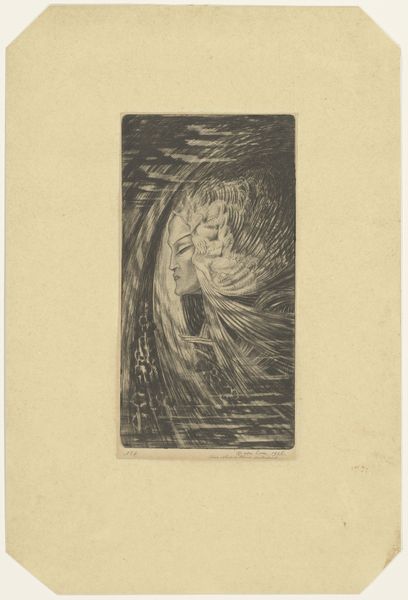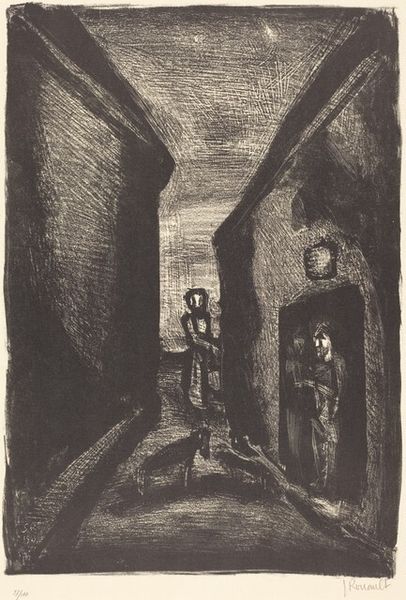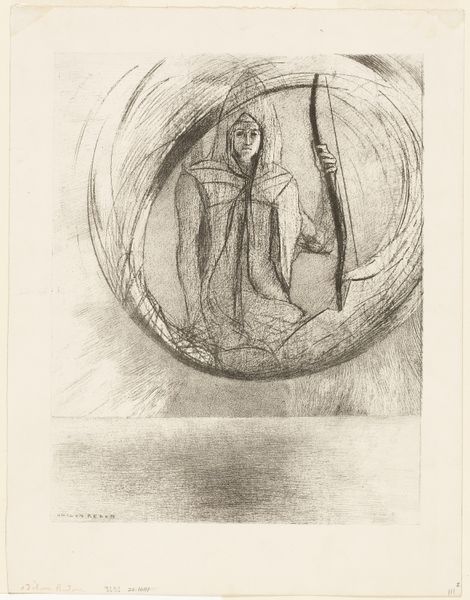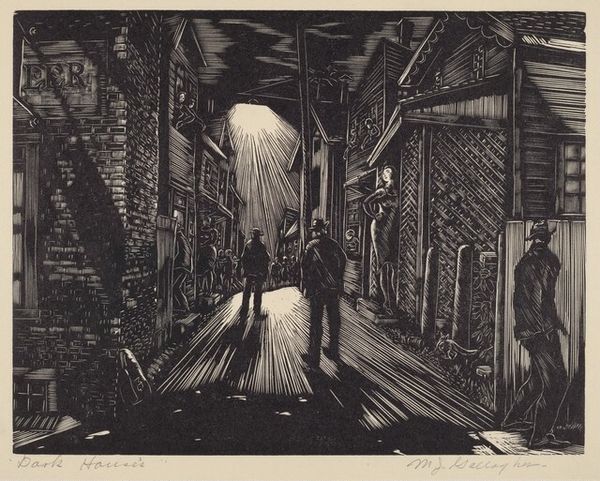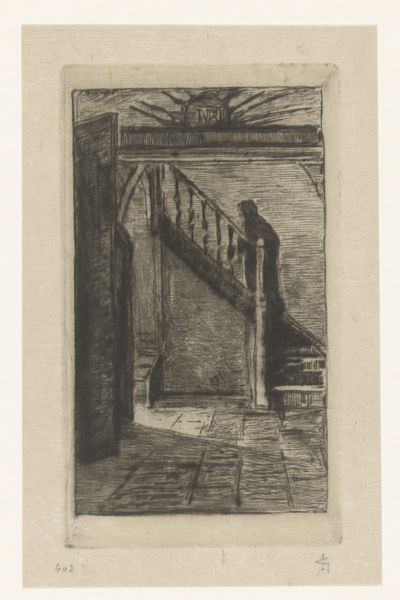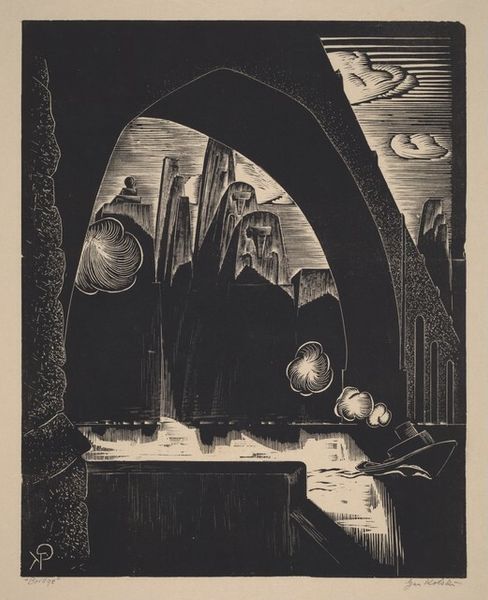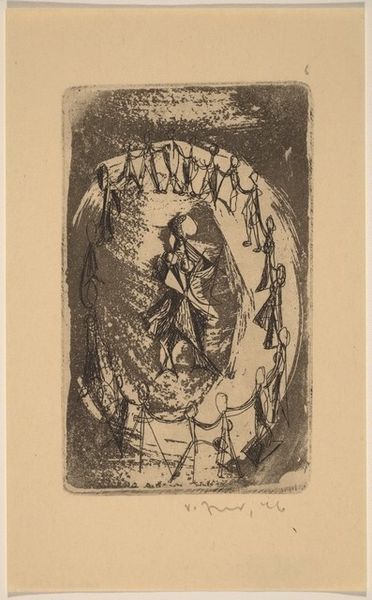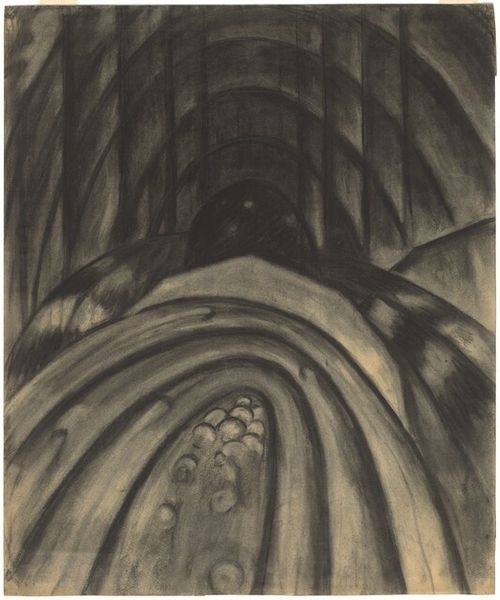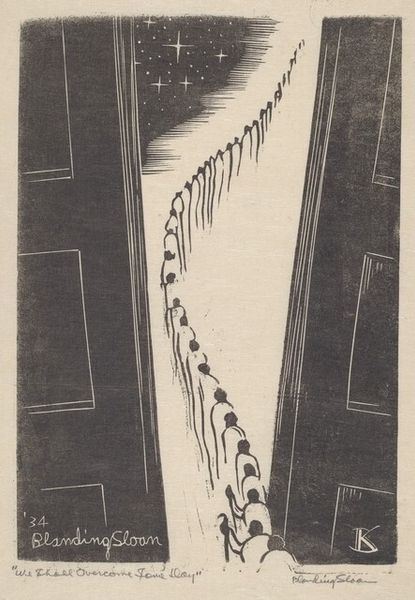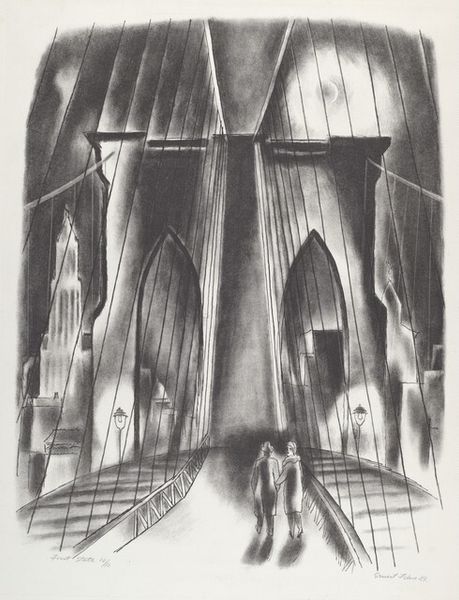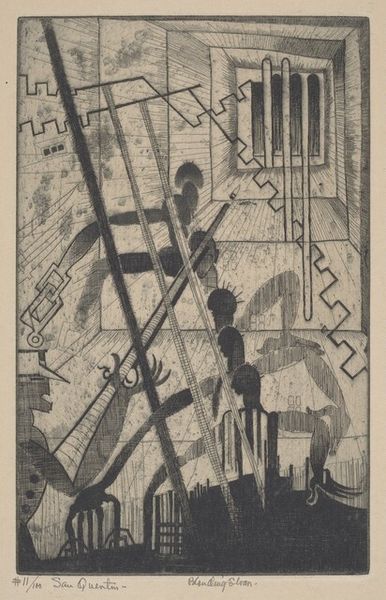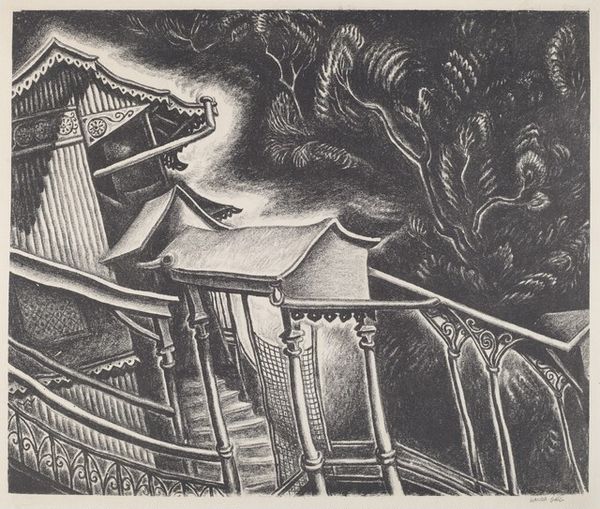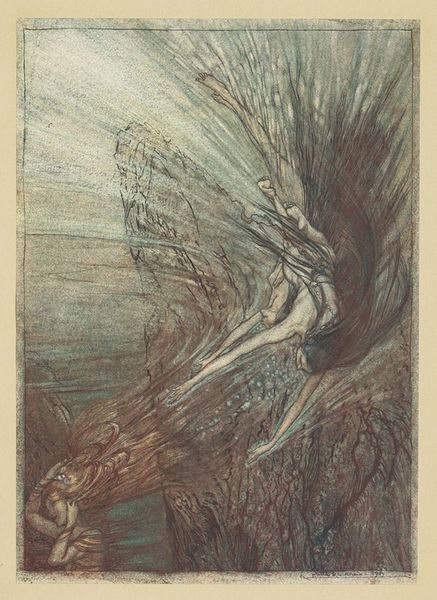
print, engraving
# print
#
coloured pencil
#
geometric
#
abstraction
#
cityscape
#
engraving
#
modernism
Dimensions: sheet: 48.9 × 37.94 cm (19 1/4 × 14 15/16 in.) image: 34.29 × 27.94 cm (13 1/2 × 11 in.)
Copyright: National Gallery of Art: CC0 1.0
Editor: Here we have N. Krishna Reddy’s "Opaque Space," created in 1957 using print and engraving techniques. The color palette strikes me immediately, almost like a dreamscape within an urban setting. What jumps out at you? Curator: The layering of engraving and printmaking provides insight into the industrial processes mimicking the supposed rise of utopian architectural design in post-war urbanism. Reddy isn't merely representing a city, he's showing us its construction, the labour-intensive and consumptive activity behind a metropolis' facade, the actual *making* of space. Do you think the 'opaque' aspect draws our attention to something specific? Editor: That’s a good point! The “opaque” part feels like a comment on hidden labour within the architecture—the almost invisible figures in the background becoming ghostly and ambiguous. Curator: Precisely. The "geometric" abstractions further obscure any clear sense of individual action within the frame. Consider also that during the mid-20th century, debates about mass production and individuality were intensifying. So, the way the printmaking process itself enables repetition resonates with larger concerns about the standardization of urban living. What might he be saying about human connection within urban construction? Editor: Hmm… So it’s less about the beauty of the cityscape and more about how those spaces are created and what that process does to people? It brings an interesting perspective of the people and resources shaping the urban world. Curator: Exactly. Reddy draws attention to how materials are transformed and manipulated. By showcasing a rather "unclear" and obscured cityscape, he compels us to consider not just the what but, very importantly, the how. Editor: This definitely made me see it in a new light, especially considering the materials used and what it might be saying about modern society at the time. Thanks for sharing your perspective!
Comments
No comments
Be the first to comment and join the conversation on the ultimate creative platform.
